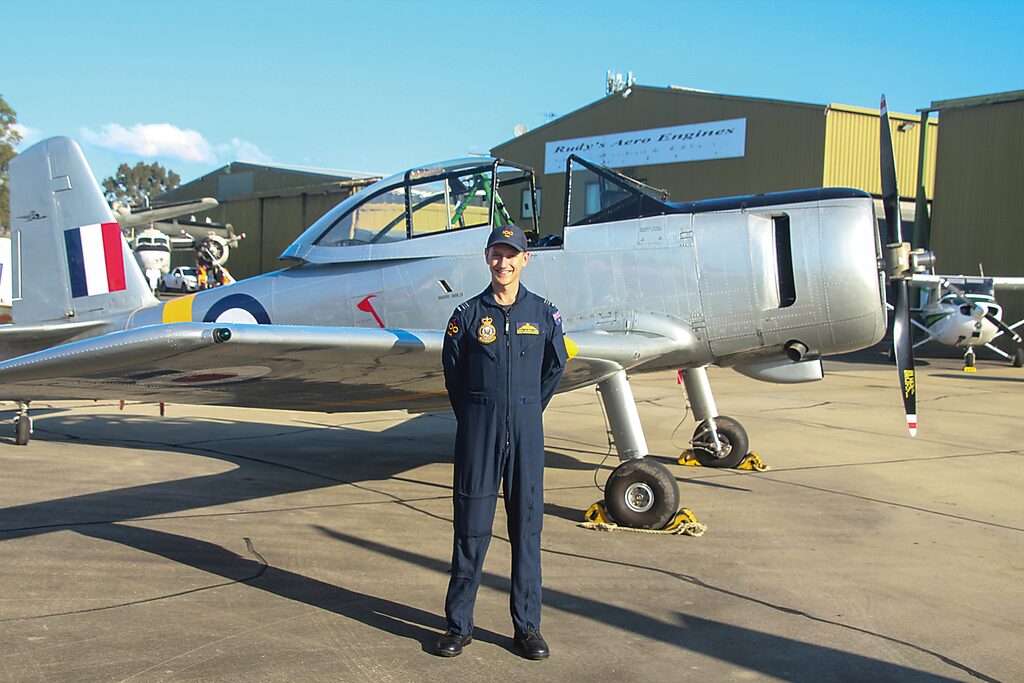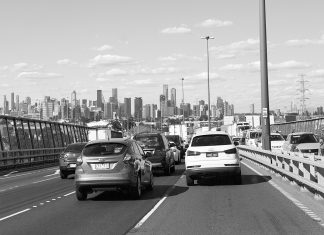By ERIKA ALLEN
ROYAL Australian Air Force aviators and professional stunt pilots “turned fuel and power into sheer awesomeness and fun” at the second Sale Anzac Weekend Airshow across the weekend of April 27-28.
At least this was according to the announcer’s reverberating voice, an estimated 12,000 to 14,000 attendees, including local, state, national, and international enthusiasts, who gathered over the two-day event, would surely concur.
“What people really like about this Airshow is they can get up and close to the aircraft … you can really smell them,” Nicholas Heath, event director of the Airshow, told the Express.
“For a lot of fans, whenever they go to a really big Airshow, everything’s behind the fence. But here, we let you get in the planes, get in the flight simulators, and really enjoy it.”
Mr Heath highlighted that this year’s Airshow showcased a record number of aircraft. The fly-in friendly event saw 23 planes journey from all over the nation, including Queensland, South Australia, and Tasmania. Pilots delighted attendees with thrilling flyovers before landing and joining the crowd as spectators.
In attendance was Flight Lieutenant, Steven Heriban, an ex-Yallourn North local.
Experiencing forces up to eight times that of gravity while flying at speeds exceeding 600 kilometres per hour in close formation with five other PC-21s is a typical weekend for Flight Lieutenant, Heriban.
During the week, he and six other Roulette pilots train instructors at the Central Flying School on how to teach aspiring aviators the intricacies of flying the PC-21.
On weekends, they fly around the country and overseas, performing distinctive aerobatic routines.
Flight Lieutenant Heriban grew up in Yallourn North and developed a passion for aviation after a joy flight with his grandfather at a local air show. He was 15 when he started flying at the Latrobe Valley Aero Club.

Flying as Roulette Three, Flight Lieutenant Heriban said he flies left of the leader in Roulette One – Squadron Leader Lachie Hazeldine.
“One of my favourites (aerobatic sequences) is a slide and break, where we all sort of slide back from each other, and then we cross in front of the crowd and look like we’re all going to hit each other,” he said.
“Obviously, we’re well trained, and that’s not gonna happen.”
Trust and training are key.
Flight Lieutenant Heriban said the former is built over the years, having known his Roulette colleagues in different roles before joining. The latter involves specific ground training where the Roulettes break the routine into chunks and meticulously learn sequences in isolation before bringing it all together.
The full airshow program featured exciting new additions alongside familiar displays. Highlights included ground displays by Hot Wheels driver Matt Mingay and the introduction of new aircraft, such as five de Havilland Tiger Moths and a Hawker Sea Fury, a World War 2-era plane.
The CAC Winjeel was another time capsule of aviation history on show. Built in 1956, this aircraft served in various training schools across Australia until its retirement in 1996.
Today, the Winjeel is preserved and cared for by the Air Force Heritage Squadron, No. 100 Squadron, based at RAAF Base Point Cook.
No. 100 Squadron’s executive officer, Flight Lieutenant Samuel Da Graca Costa, piloted the Winjeel on the weekend, leading a formation of other training aircraft.
Pointing to the No. 100 Squadron marquee set up in the centre of the event, he highlighted the importance of public engagement. Seeking to inspire young people to join the Defence Force, Flight Lieutenant Da Graca Costa said their role at the Airshow was threefold.
To commemorate Anzac Day, celebrate aviation and inspire future aviators.
He called the No. 100 Squadron “custodians” because they operate the RAAF’s fleet of heritage aircraft. The Squadron was reformed in January 2021 to coincide with the Air Force Centenary.











